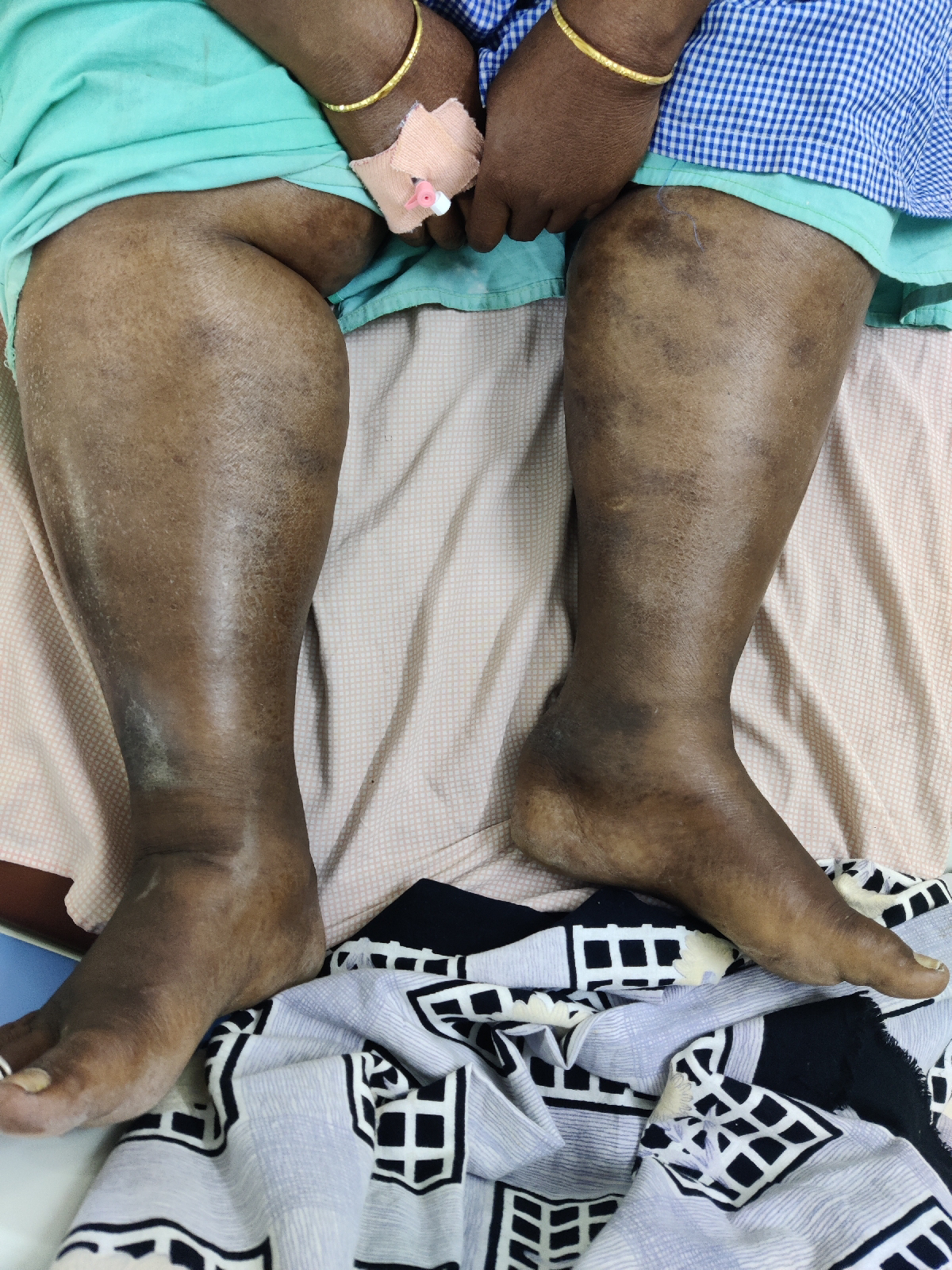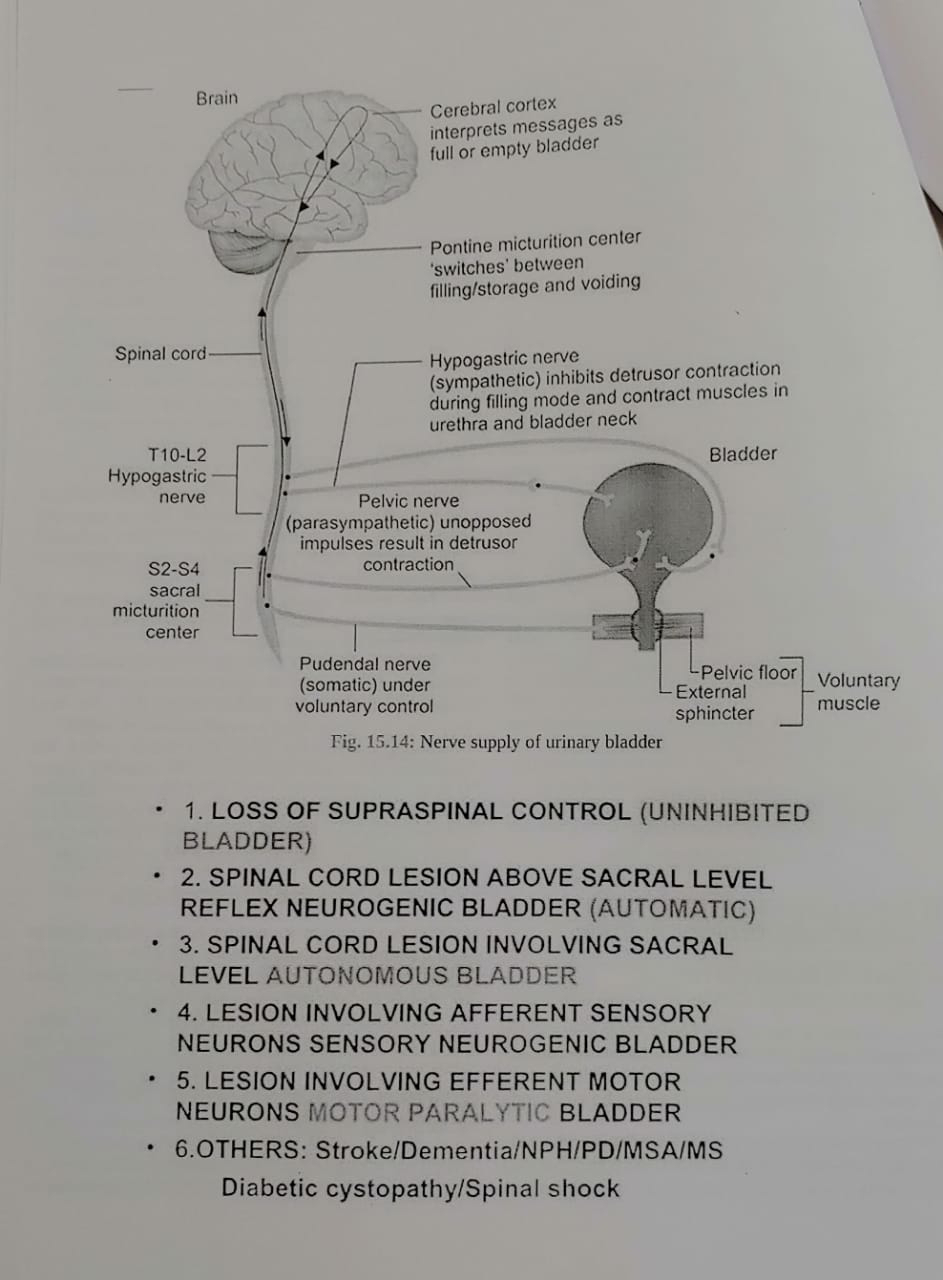Shivani Kommera
General Medicine Monthly Assessment
This is online elog book to discuss our patient's de-identified health data shared after taking his /her /guardians signed informed consent. Here we disuss our individual patients problems through series of inputs from available global online community of experts with an aim to solve those patients clinical problems with collective current best evidence based inputs.
LONG CASE
1. A 44 years old male with 3 days of Bilateral symmentrical oedema and proggressive generalized oedema .
The Case was very well presented with adequate information about the patient. This information made us easy to understand the symptoms of the patient and it helped us to Diagnose the case .
Clinical Examination
• Initial examination revealed, the patient was conscious, coherent and co-operative, lying in bed in supine position.
• He was in some visibly apparent distress with flexion at his elbows and wrists, bilaterally, which were mildly painful when resting on the bed and his abdomen, respectively.
• The patient was dressed in a round neck t-shirt and when asked to sit up and take his t-shirt off, he had significant pain and limitation of movements at multiple joints but no weakness.
Supine position
• Pulse - 92 bpm , regular , normal volume , condition of vessel wall is normal , no radio radial delay , no radio femoral delay . All peripheral pulses were normal.
• Blood pressure - 140/90 mmHg
• Temperature - 99.3°F
• Respiratory rate - 24 cycles per minute . Mildly acidotic + prolonged duration of expiration .
The patient has Bilaterally Symmetrical Chronic Progressive Erosive Peripheral Polyarthritis. Differential diagnosis for such conditions include -
- Rheumatoid Arthritis (most likely)
- Rheumatoid Arthritis with coexistent Gout
- Psoriatic Arthritis
- Enteropathic Arthritis
- Reactive Arthritis
- SLE
- Polymyositis / MCTD (Mixed Connective Tissue Disorder) (least likely)
Provisional diagnosis - Acute Glomerulopathy / Glomerulonephritis / Nephrotic syndrome
Diagnostic Approach
• With a provisional diagnosis of Acute Glomerulopathy on the background of bilaterally symmetric chronic progressive erosive peripheral polyarthritis, features supporting the diagnosis of glomerulonephritis were -
- Secondary Hypertension
- Oliguria (360 ml urine in the last 24 hours)
- Hypoalbuminemia (Serum Albumin 2.5g/dl) and Anasarca
- Dysmorphic RBCs in Urine
- 24hrs urinary protein: 1500 mg
- 24hrs urinary creatinine: 0.8
Final Diagnosis
A 44 year old , who presented with 3 day history of anasarca and decreased urine output .
• Acute Glomerulonephritis, likely due to Secondary Amyloidosis due to Chronic Poorly Treated Seronegative Erosive Rheumatoid Arthritis.
• Dilutional Hyponatremia secondary to Anasarca due to Glomerulonephritis
• Hyperuricemia likely due to decreased Uric Acid Excretion Precipitating Gouty Arthritis
• Anemia of Chronic Disease secondary to Poorly Treated Rheumatoid Arthritis.
TREATMENT
- Free water restriction for Hyponatremia
- Tab. PREDNISOLONE P/O 20 mg OD
- Tab FEBUXOSTAT P/O 80 mg OD
- Haemodialysis for worsening renal dysfunction.
SHORT CASE
2. A 49 year old English and Telugu language lecturer presented with a 2 month history of progressive asymmetric involuntary movements of his right index and middle fingers.
The Case was very well presented with adequate information about the patient. This information made us easy to understand the symptoms of the patient and it helped us to Diagnose the case .
General Examination
• Patient is conscious, coherent & cooperative.
Vitals at the time of history taking -
• PR - 88 bpm , regular , normal volume , condition of vessel wall is normal , no radio radial delay , no radio femoral delay . All peripheral pulses were normal.
• BP - 190/110 mm Hg
• After standing for 3 mins - BP - 160/110 mm Hg
• Temp - Afebrile
• RR - 16 cpm
• No signs of Pallor, Icterus, Cyanosis, Clubbing, Generalized lymphadenopathy or edema .
NERVOUS SYSTEM EXAMINATION
1. Level of consciousness - Normal (GCS 15/15)
2. Attention - Intact
3. Orientation - to time, place and person - Intact
4. Language - fluency & latency, comprehension, repetition, naming, reading and writing - Intact. Prosody - impaired
5. Memory - immediate recall, recent and remote - Intact
6. Other higher mental functions - general knowledge, abstraction, judgement, insight and reasoning - Intact.
CRANIAL NERVES EXAMINATION
1st
• Normal (smell of soap).
2nd
• Counting fingers at 6mts both eyes normal.
3rd,4th,6th
Pupil size. N N
DLR/CLR. N. N
• No pstosis, nystagmus.
5th
• Both sensory & motor normal.
• Corneal & Conjunctival reflex +.
7th
• Nasolabial fold normal.
• No deviation of mouth.
• Salivation & Lacrimation unaffected.
8th
• Rinne's AC>BC.
• Weber's - No lateralization.
9 th, 10th &
• Palatal movements normal.
• No difficulty in swallowing.
• Gag reflex present.
11th
• Movements of neck in all directions+.
• Lifting of shoulders +.
12th
• Tone of tongue - Normal.
• No wasting, no fibrillations & deviation of tongue.
• Tongue tremor+.
• Involuntary movements - Resting tremors of Right upper limb .
• Gait - Reduced arm swing.
• Finger tap and toe tap - Normal.
• No decrease in speed on repeating the movement continuously.
CEREBELLUM
• Head Impulse - negative
• Nystagmus - negative
• Test for skew - negative
• Gait Ataxia absent.
• Dysarthria absent.
• Rebound phenomenon absent.
• Intentional tremors - absent.
• Pendular knee jerk - absent.
• Tandem walking normal.
• Coordination tests
• Dysdiadochokinesia absent
• Finger nose test normal
• Heel knee test normal
• Rombergs Test - Negative
• Rapid supination and pronation - Diadochokinesia
• This is a test to elicit the bradykinesia component of Parkinson's disease.
• Findings - The movements in the right lower limb is slower than the movements in the left lower limb.
• The first test was only toe tapping, the second test is entire foot tapping.
Respiratory system
• Shape & symmetry of chest - Normal
Respiratory movements - Equal on both sides
Abdominal Examination
• Soft, Non-tender
• No Hepatomegaly
• No splenomegaly
• Bowel sounds+
FINAL DIAGNOSIS -
A middle aged man presenting with a 6 months history of gradually progressive, asymmetric rest tremor with autonomic features is provisionally diagnosed with
1. Idiopathic Parkinson's Disease Stage 1 with denovo HTN.
2. Multiple System Atrophy - Parkinsonian Type (MSA-P).
TREATMENT
1. Tab. Syndopa Plus 125 mg QID
2. Tab. Syndopa 125 mg CR OD
3. Tab. Telma 40 mg OD
SHORT CASE 2 -
19 year old male resident of Nalgonda and currently studying intermediate came to opd with complaints of :
- Itchy Ring leisons over arms ,abdomen ,thigh and groin since 1 and half year .
- Purple stretch marks all over abdomen ,lower back ,upper limbs ,thighs since 1 year .
- Abdominal distension and facial puffiness since 6 months.
- Pedal edema since 3 months.
- Low back ache since 3 months .
- Feeling low , not feeling to talk to anyone.
- Weight gain and decreased libido since 3months.
- Loss of libido and erectile dysfunction since 2 months .
• Pt was apparently alright one and half year ago , when he slowly developed erythematous round leisons which are annular shaped and itchy all over abdomen , upper limb ,groin and inner thigh region .
• Later after 2 months he developed multiple hyper pigmented plaques over lower limbs ,abdomen , for which he again visited same place and used ayurvedic oils over the leisons.
• He also used clobetasol ointment over the leisons.(for approximately 1 year all over the body)
• He started noticing Pink striae over his abdomen first and later on back and over arms,which were gradually increasing in size
• He started noticing abdominal distension and facial puffiness ,weight gain.
• He developed pedal edema and low back ache since 3 months .
• No complaints of chest pain ,sob , palpitations .
• No complaints of decreased or frothy urine.
• No other negative history.
• No h/o DM,HTN,TB,ASTHMA,CAD.
• ALLERGIC HISTORY - pt gives h/o allergy to eggs ,brinjal .
• The Case was very well presented with adequate information about the patient. This information made us easy to understand the symptoms of the patient and it helped us to Diagnose the case .
GENERAL EXAMINATION
Patient is conscious, coherent & cooperative.
Vitals at the time of history taking -
Blood pressure - 160/100mmHg
Pulse rate - 96 Bpm , regular , normal volume , condition of vessel wall is normal , no radio radial delay , no radio femoral delay . All peripheral pulses were normal.
Respiratory rate - 18 cpm
Spo2 - 98% on ra.
Weight - 63 kg.
Height - 175 cm
• NO pallor ,icterus ,cyanosis , clubbing, lymphadenopathy.
• Pedal edema present - pitting type extending upto knee.
• Abdominal distension present.
• Moon face present
• Pink striae noted over anterior abdominal wall and on low back and on upper arms and thighs.
• Thin skin present .
• Poor healing noticed over leg ulcers and easy bruising noted .
• Acne present over face .
• Acanthosis nigrans noted over neck.
• GYNECOMASTIA PRESENT .
• Buffalo hump present .
• Sparse scalp hair .
SKIN EXAMINATION
• Multiple itchy erythematous annular leisons noted all over abdomen , upper limb ,groin and inner thigh region .
• Multiple hyperpigmented plaques noted over bilateral lower limbs .
SYSTEMIC EXAMINATION
• CVS - S1S2 heard .No murmurs
• RS - BAE present .
• No adventitious sounds .
• P/A - Soft , distended .
• No organomegaly .
• Bowel sounds present
• Tone Normal
• Reflexes Normal
• Cranial nerves normal
• Difficulty in getting up from chair was noticed.
• FINAL DIAGNOSIS :
• IATROGENIC CUSHINGS SYNDROME
• TINEA CORPORIS
• DENOVO HTN
• TREATMENT
• Secondary to topical CLOBETASOL application all over the body for one year .



Comments
Post a Comment